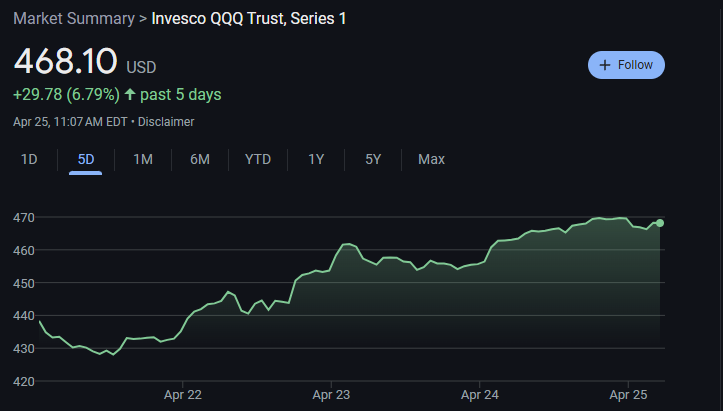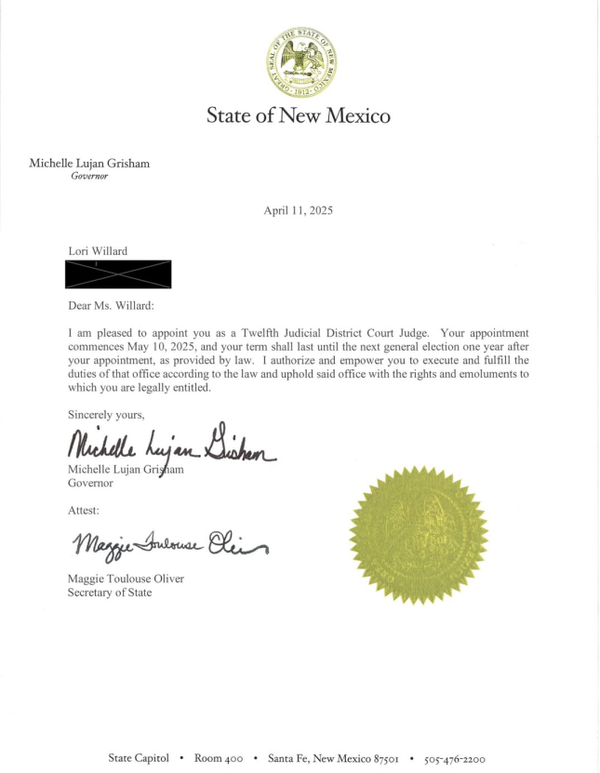Trade Alert: Upping Uber’s Revolution Rating As New Analysis Highlights Upside Potential
I haven’t had Covid that I know of but this morning I am not feeling well and I have some Covid-like symptoms. I am getting tested but for the first time in years, I have gone home for the day. All eyes on the Fed meeting today, I guess. Steady as she goes, really.
I want to mention that I sold ROKU, locking in a nice gain. I think there will be some better places to deploy that capital in coming days and weeks. The markets have been on fire this year, as I’d set up for in my end-of-year Trade Alerts. I’ve sold most of the calls from those buys now and have added some puts on SPY, ARKK and a few other hedges in the hedge fund. Sitting tight in my personal account.
And with that, I’m excited to share the first report written by my new partner, Bryce Smith. We’ve been working through new analysis on all of our names and Uber stuck out as one we want to continue to hold onto. Here’s the report.
Uber Technologies Inc
NYSE: UBER
Price At Time of Analysis: $31.075
Synopsis At roughly 7.6x our year-three (FY 2026) earnings estimates, UBER presents a compelling value with a secular growth story, coupled with near-term upside potential as UBER continues its march toward market dominance in its ride-hailing and delivery businesses. Our position is further supported by UBER’s position as a platform company; a platform which in our view has already reached critical mass with its substantial user and driver bases. With a view to the long-term, UBER presents attractive upside potential with its overwhelming focus on becoming the market leader in autonomous vehicle (“AV”) mobility and its advanced utilization of AI in its existing technology.
| Exhibit 1: Key Metrics | |
| Market Cap, curr (mm) | $61,637 |
| Total Revenue (ttm) | $29,048 |
| Current Gross Margin | 39.9% |
| Current Operating Margin | <7.7%> |
| Net Cash Per Share (as of 9/30/22) | <$2.24> |
| Price/Sales (ttm) | 2.12 |
| YoY Revenue Growth (ttm) | 56.7% |
| Consensus 2023 Revenue Growth Est. | 15.9% |
To begin, UBER is already the clearest winner in the ridesharing and delivery businesses. Unlike similarly positioned companies in the “sharing” economy, UBER is no longer proving its concept nor fighting to establish a profitable market against old-world competitors (think ABNB fighting hotels for share). Rather, UBER has established its mobility service as the de facto standard for ridesharing in the US. UBER currently commands roughly 70% of the US rideshare market, and has significantly expanded in the international market with attractive growth potential in key markets (e.g. India). UBER’s established technology, including AI driver routing and advanced pricing model is now being applied to other untapped areas of the old economy (see, e.g., our discussion of freight below).
Not only has UBER proven its concept, it did so in what was an uber competitive market, all while taking on a restrictive legal environment. As an example of how the tables have turned, UBER is using its ride-hailing technology to provide a significant value-add to private taxi operators following its acquisition of Autocab, and is now targeting to have every taxi on its platform by 2025, estimating that the existing hailables industry is ~2x the size of its current mobility business. This is just one example of how UBER is applying its proven model and advanced technology to steal share in established old-world markets.
Moreover, UBER’s rapidly growing freight businesses (~237% topline growth (2022 est.)) represents another existing market that UBER can rapidly penetrate to drive growth using its existing technology. While AVs with full self-driving capabilities might be further on the horizon, freight presents an immediate growth driver in an archaic industry ripe for the picking. The trucking industry is one of the largest and most labor-intensive in the US, has an aging workforce (average age of 55), and is facing one of the biggest driver shortages seen in decades. Most importantly, the industry is served by approximately 17,000 brokers who organize loads and charge substantial fees for doing so. Using its existing AI technology and automation, UBER can provide more efficient load management at a lower cost than traditional brokerages. Further, UBER stands to win in the long run as the industry ultimately transitions to AVs. We expect UBER’s disruption of this industry to cause significant pain on existing freight brokerage firms and are currently looking for the best stocks to short in this area.
Lastly, we expect UBER’s focused investments on AVs and AI to continue to pay off in the long run. Due to its existing size, dedicated customer base, and most importantly, its proven sharing platform, UBER will benefit as the world makes the expected transition to AVs. UBER will likely be a beneficiary of the reshaping of the economics of individual car ownership as AV adoption takes hold, as capital consolidates car ownership in the hands of a few AV operators. With this in mind, our view is that UBER will be positioned to compete with and in fact may even benefit from Tesla’s Robotaxi program given the factors noted above. In any case, given the critical mass already achieved in UBER’s ride-hailing and delivery businesses, plus its commitment to early AV implementation, we think it stands to benefit from the development of full-self driving (“FSD”) vehicles by Tesla or others.
No doubt, some hurdles remain in terms of legal challenges to UBER’s model and competition abroad (not to mention a possible US recession), but we see UBER now firmly entrenched as the go-to provider in the sharing economy, with remaining issues acting simply as speedbumps on the road to market dominance. Add in the revolutionary possibilities of AVs with FSD, UBER’s AI tech, the reshaping of the economics of vehicle ownership, and UBER is positioned to achieve a $200bb +/- valuation in the next four to five years.
Our Model
Exhibit 2
| 2022 | 2023 (est) | 2024 (est) | 2025 (est) | 2026 (est) | 2027 (est) | 2028 (est) | |
| Revenue (mm) | $30,949 | $38,876 | $46,957 | $54,859 | $62,317 | $69,340 | $75,873 |
| YoY Growth | 77.31% | 25.61% | 20.79% | 16.83% | 13.60% | 11.27% | 9.42% |
| Gross Margin | 38.00% | 39.14% | 40.31% | 41.52% | 42.77% | 44.05% | 45.37% |
| Gross Income | $11,761 | $15,216 | $18,930 | $22,779 | $26,653 | $30,546 | $34,427 |
| Op Expenses (ttm) | $13,500 | $15,525 | $17,078 | $17,931 | $18,828 | $19,769 | $20,758 |
| Operating Profit | -$1,739 | -$309 | $1,853 | $4,848 | $7,825 | $10,777 | $13,669 |
| Price / Profit | N/A | N/A | 31.9 | 12.2 | 7.6 | 5.5 | 4.3 |
UBER’s valuation on a 3 to 5 year forward earnings basis presents a compelling investment opportunity given its present growth and upside potential discussed above. Our model assumes a 2023 topline growth rate of approximately 25% (exceeding consensus estimates by ~10%), which we feel is reasonable given UBER’s significant post-pandemic revenue gains (~56% (2021) and ~77% (2022 est.)). Further, we expect UBER’s relatively new entrance into the freight market to be a continued driver of growth in the near term. We have topline growth stabilizing at 10% annually starting in 2028.
Further, we are projecting slight increases (3 bps annually) in gross margin for the foreseeable future as UBER continues to gain share and solidify its place as the de facto standard ridesharing and delivery app in the US. UBER’s now large and dedicated source of delivery drivers (estimated at 5mm worldwide v. 1mm est. for LYFT) who can earn on multiple products (ride-share, delivery, grocery, etc.) and have stuck with the company through the pains of the pandemic and fierce competition, should serve as an additional source of gross margin expansion. This established driver base, the corresponding weakness in that of UBER’s competitors, an established customer base, and above-average brand loyalty should all further buttress gross margins going forward. Lastly, we note UBER’s recent addition of its presumably high-margin advertising business should further move gross margins upward.
Lastly, we model operating expense growth slowing to ~15% growth in 2023, 10% in 2024, and 5% thereafter. In addition to reductions in headcount, CEO Dara Khosrowshahi has promised to slash spending on marketing and incentives to bring operating costs under control. These are all steps in the right direction, and we feel UBER can maintain our modeled trajectory of revenue growth without significant additions to operating expenses. As discussed herein, UBER’s platform is already built out, its technology is in place, and UBER should be able to add incremental revenue in its existing and new markets without having to reinvent the wheel and thereby dramatically increase operational costs.
Exhibit 3: Valuation Comparison in the Sharing Economy
| Stock | 2023 Rev. Growth Est. | Year-Three P/P (est.) |
| UBER | 25.61% | 7.6 |
| LYFT | 17.90% | 24.0 |
| DASH | 21.20% | 18.0 |
| ABNB | 12.00% | 22.9 |
Discussion of Downside Risks
In the near term, our primary concern is that UBER fails to bring operating costs under control. UBER has notoriously operated with, in our view, outsized SG&A and we hope the underperformance of its stock will be a sign to management to make reducing operating costs a primary focus. Despite promises, UBER’s management has let the company’s model of “growth at all costs” pervade far beyond the exit of ex-CEO Travis Kalanick. However, we note this problem is not necessarily unique to UBER and cost cutting has clearly become a focus in Silicon Valley following the collapse of the 2020-2021 bull market.
Additionally, we fear that UBER’s businesses (especially its delivery business) may be subject to a cyclical downturn if the global economy enters a recession. UBER’s businesses depend largely on consumers having fairly high levels of discretionary income to spend on travel and eating out. Further, corporate travel can be expected to drop precipitously with any downturn in the business cycle. While this effects our near-term outlook, we expect UBER to continue to show topline improvement given the secular growth story presented above. Further, we note that UBER demonstrated a remarkable recovery following a 70% drop in rides during the COVID lockdown. We view UBER’s resilience throughout the pandemic as demonstrative of its capability to withstand future cyclical downturns.
Despite our discussion of UBER’s relative competitive advantages, UBER nevertheless faces significant competition on multiple fronts. UBER has horizontally integrated its business and focused heavily on cross-listing various products in somewhat unrelated industries on its app. However, this strategy could prove too broad, and ultimately UBER may lose share to competitors with a more singular industry focus. Further, while we think UBER has clearly beaten LYFT in the ridesharing business, the possibility exists that a reversal could happen, especially if LYFT were to merge with another of UBER’s competitors (think DoorDash).
Further, while we think UBER’s strong presence abroad presents a significant tailwind, we are conscious that a large portion of international consumers will not have a sufficient level of discretionary income required to utilize UBER’s services. Accordingly, UBER’s significant investments in these markets may prove for naught if an insufficient percentage of the total addressable market cannot afford its services.
We also note that UBER continuous to face challenges on the legal front. UBER’s drivers have recently demanded more pay, and various jurisdictions have sought to require ridesharing companies to treat their drivers as employees rather than independent contractors. Further, if UBER gains commanding market share in any of its markets in the US, it could face anti-trust action.
Lastly, we note that in the long-term our thesis about the impact of FSD and AVs on UBER’s business could be wrong. TSLA has made Robotaxi a focus of its future growth trajectory and we are not ones to bet against TSLA and Mr. Musk. While we think that FSD will ultimately benefit UBER as well as TSLA, TSLA could singularly eliminate a large portion of UBER’s revenue if it is the first to achieve scalable FSD and refuses to allow UBER to utilize its technology.
Summary
With its now well-established platform commanding an overwhelming share of the US ridesharing and delivery markets, its potential for significant growth abroad, its growth into the freight business, and its leadership in AI and AVs, UBER stands to be the winner of the secularly-growing sharing economy. Trading at a significant discount to its peers in this industry (7.6x our 2026 est.), we see UBER as presenting a compelling value at these levels and are excited about the upward trajectory of the company given its revolutionary AI and AV components. We’re now rating UBER a 8+/10 or even a 9-/10 on our Revolutionary Rating scale that goes from 1 to 10.




